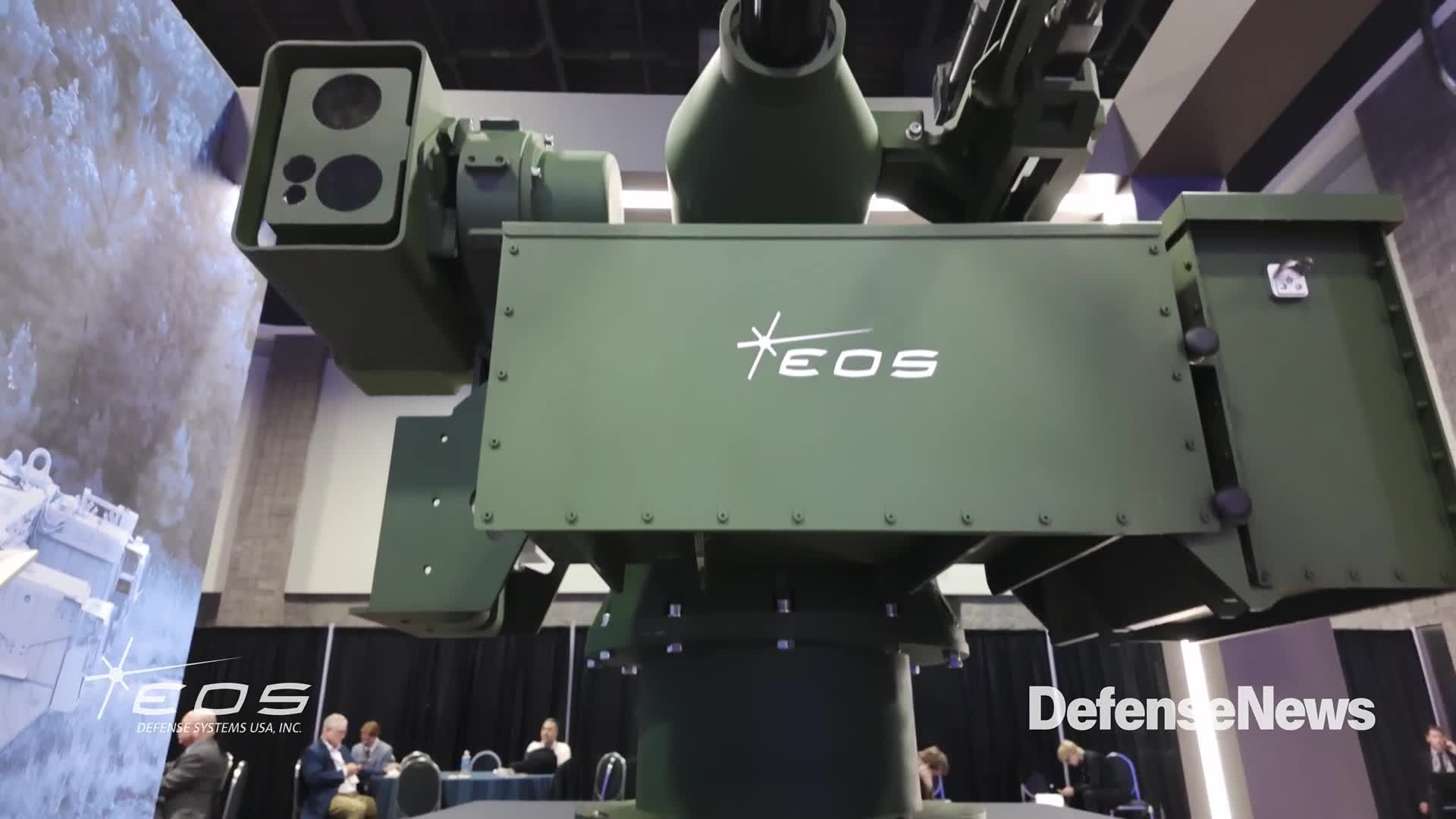Correction: This story has been updated to correct a reference to the helicopter’s forward-looking infrared system.
ORLANDO, Fla. — The U.S. Air Force’s next combat rescue helicopter is expected to begin its operational testing phase by the end of the month.
Sikorsky’s HH-60W Jolly Green II — the successor to the Air Force’s HH-60G Pave Hawk — has made considerable progress, with more than 40% of test and evaluation efforts already completed, said Darlene Costello, the Air Force’s principal deputy assistant secretary for acquisition, technology and logistics.
That progress also includes a completed certification of the Jolly Green II’s weapons, Costello added during a March 4 roundtable with reporters at the Air Force Association’s Air Warfare Symposium in Orlando, Florida.
A test of its radar warning receivers is the last step before the initial operational test and evaluation phase can begin. The IOT&E phase is expected to begin by March 30, she said.
The Pave Hawk has been flying since the late 1980s and it’s grown “long in the tooth,” David Morgan, Sikorsky’s director for Air Force business development, told Defense News in an interview at AFA. The service plans to buy 113 Jolly Green II helicopters to replace them, at a cost of almost $7.6 billion.
It’s a derivative of the Army’s H-60M Black Hawk and has many parts and features in common, making it easier to find spare parts, Morgan said.
But Morgan said the Jolly Green II will bring major changes, making it a significant upgrade from the Pave Hawk.
When the Air Force fielded the Pave Hawk, it bought Black Hawks and then started heavily modifying them over a period of years for their new combat rescue mission, Morgan said. The Jolly Green II, however, was designed from the start to fly Air Force pararescue specialists on rescue missions, he said.
“This is the first Air Force-bought, -designed, -purpose-built helicopter rescue platform,” Morgan said.
Part of that includes a redesign of the Jolly Green II’s fuel tanks to make them safer in the event of a crash than the Pave Hawk’s. Both helicopters will carry similar amounts of fuel, Morgan said. But the Jolly Green II has an internal 644-gallon fuel tank, nearly double that of the Pave Hawk’s 360-gallon fuel tank. The Pave Hawk’s fuel capacity is buttressed by a pair of auxiliary fuel tanks strapped down inside the cabin, Morgan said. That takes up cabin space and could be dangerous in a crash if the tanks broke loose and went flying.
The redesign has added a foot and a half of additional cabin space, Morgan said, and allowed the addition of a litter station. Conversely, in the Pave Hawk, he said, airmen couldn’t put anything up against the auxiliary tanks.
The Jolly Green II also has new seats in the back that fold up into the ceiling and can withstand the tremendous force of a crash landing, he said.
“Can you imagine, the PJ [pararescue] rescue team, they’re sitting on ammo cans, they’re sitting on coiled-up fast ropes, and they just put a cargo strap over them,” Morgan said. “That’s how they fly nowadays. Now, everybody has seating. [It’s] crash-worthy. It’s much safer.”
The new helicopter uses an electric hoist, which Morgan said will allow it to operate more cycles without overheating than the Pave Hawk’s hydraulic hoist.
The Jolly Green II was also created with its forward-looking infrared, radar and air-refueling systems designed into the structure from the ground up, rather than “bolted on afterwards” as the Pave Hawk’s systems were, Morgan said.
The Jolly Green II will include multiple radios, satellite communications, the Link 16 data and comms system, intelligence capabilities, low light and infrared cameras, and several multifunction displays, giving airmen the ability to rapidly receive and analyze information needed to rescue a downed pilot or other survivor.
The Pave Hawk often has to rely on its communication systems — including trying to radio the survivor on the ground — to get the coordinates for the rescue, Morgan said. But with its advanced data capabilities, the Jolly Green II will be able to gather all the information it needs digitally and display it on multifunction displays without having to talk to people.
“This aircraft is an information machine,” Morgan said.
The helicopter’s open-architecture mission system also will make it easier for the Air Force to upgrade it down the line, said Bob Silva, Sikorsky’s business development lead for the combat rescue helicopter.
The Air Force so far has ordered 66 helicopters in four lots from Sikorsky, which has delivered 17 helicopters, most recently in January. Sikorsky expects to deliver about one helicopter a month on average through lot 1, though he expects that to increase to about three helicopters every two months for lots 3 and 4.
Morgan expects the Air Force to start ordering Jolly Green IIs for the Air National Guard and Air Force Reserve in lot 5, which will come in fiscal 2023. If the Air Force keeps ordering helicopters at its current pace, the last order could come in 2026 or 2027, and deliveries would be finished three years later, he said.
Testing has taken place at several locations, including Duke Field at Eglin Air Force Base in Florida. The helicopters’ radar warning receivers also underwent testing at Naval Air Weapons Station China Lake in California.
Morgan said initial operational capability will likely be declared this year.
The helicopter was named in tribute to the Vietnam-era Sikorsky HH-3E, which was painted green and nicknamed the Jolly Green Giant.
Stephen Losey is the air warfare reporter for Defense News. He previously covered leadership and personnel issues at Air Force Times, and the Pentagon, special operations and air warfare at Military.com. He has traveled to the Middle East to cover U.S. Air Force operations.








